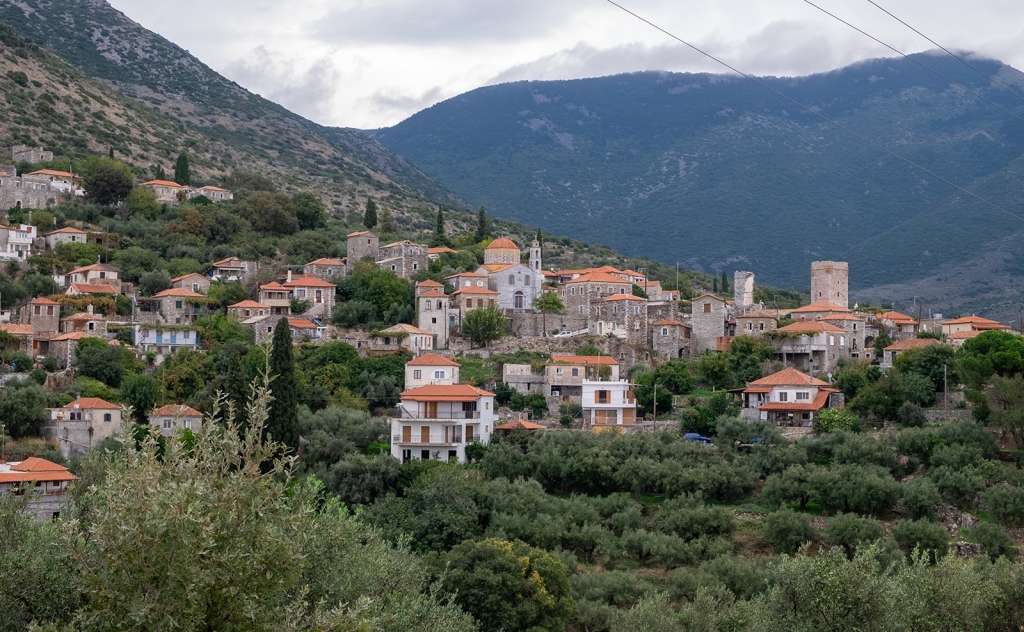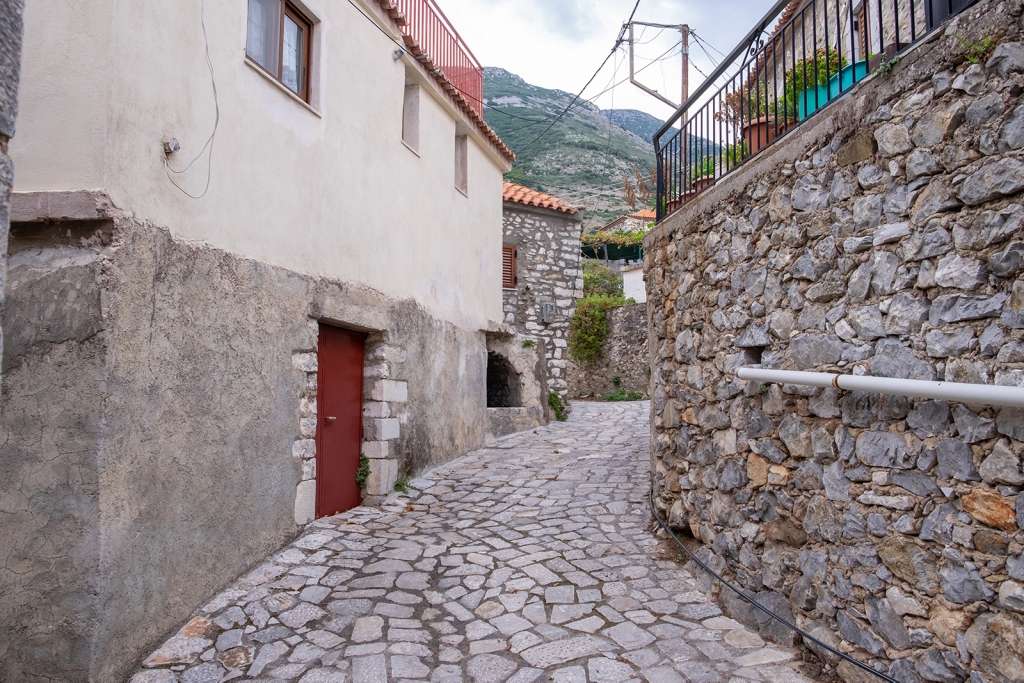










The traditional village of Lagada is amphitheatrically built between the Lagadias Emploutsos and Vathi Pigadi, to which it owes its name. Specifically, it is built at an altitude of 456 metres and is 57 kilometres from Kalamata. Lagada has been characterised as a traditional settlement of Messenia and one of the 118 traditional settlements of the Peloponnese.
In ancient times, Lagada was a crossing of the road that led from Sparta to the Messenian coast and was incorporated into the territory of Thalames. The village’s history goes back to Roman times, when the Romans occupied Thalames in 68 AD, establishing their stables in Lagada and their bodyguards in the adjacent area of Somatiana.
In 1805, the village was visited by the English soldier, surveyor and archaeologist William Martin Leake during his tour in Greece, which he mentions.
In Lagada, the houses with traditional architecture stand out, to which the Mani craftsmen contributed with the carving of the stone, known as "petrofai (the ones who “eat” stone)", such as craftsman Ioannis Kiskiras from Lagada, in 1820.
In the village, in the Alexianos neighbourhood, visitors can see the Kapitsinos Tower, which was built in the 19th century. The tower is a representative example of a five-storey war tower of the Pre-Revolutionary period. It is kept in good condition and is open to the public. The three-storey Pyrgos of the Oikonomeas family (owned by Eleni Oikonomeas) is also noteworthy. It is a typical example of Mani architecture and has been classified as a historic monument by the Ministry of Culture.
The church of the Transfiguration of the Savior dominates the square of Bloutsianika. It is a four-pillar, cruciform inscribed church with a dome which dates back to the 14th century. The church was initially dedicated to Agios Vlasios, but in 1866, it was renamed by the Ktenaveas family. Next to the temple, there is a fountain with a roofed vaulted structure, while to the left of the dome, there is a stone-carved cross, and to the right, a representation of a daughter.
On the western outskirts of the village is the cemetery church of Agia Sophia. It is a one-room road temple with an arched two-lobed bell tower. In 2011-2013, the temple was restored by the 26th Ephorate of Byzantine Antiquities.
The church of the Presentation of the Virgin, the construction of which began in 1908 and was completed in 1917-1918, is also worth visiting. Inside the church, part of the Holy Cara (head) of the saint that helped the Christianization of Mani, Agios Nikon the Repentant, who came from Armenia, is kept in a silver urn.
An important monument of Lagada is also the old church of Giatrissa, with the largest monastery in the area, which, in the past, housed 300 monks. The Saint mentioned above, Nikon the Penitent, fell asleep (died) in it.
Finally, hagiographer Anagnostis, who has painted many churches in the broader area, came from Lagada.